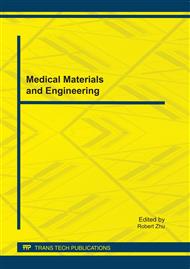p.220
p.229
p.235
p.238
p.244
p.248
p.253
p.258
p.263
Treatment of Ventricular Tachycardia Storm
Abstract:
OBJECTIVE: To investigate the clinical efficacy and safety of low-energy direct current defibrillation combined with intravenous application of β-receptor blocker in the treatment of ventricular tachycardia storm (VTS). METHODS: A total of 59 patients with VTS were randomly divided into two groups. In the control group (n = 31), intravenous administration of Lidocaine or Amiodarone and routine electrical defibrillation were performed. In the esmolol group (n = 28), intravenous administration of esmolol and low-energy electrical defibrillation were performed in addition to the same drug treatment as the control group.RESULTS: The success rate of terminating recurrent ventricular tachycardia or ventricular fibrillation was significantly higher in the esmolol group than in the control group (89.71% vs. 39.89%, P < 0.05). The necessary discharge times and average discharge energy to terminate ventricular tachycardia or ventricular fibrillation were significantly decreased in the esmolol group compared with control (5.69 ± 1.34 times vs. 8.63 ± 3.79 times, 95.32 ± 13.21J vs. 185.39 ± 25.63J, both P < 0.05). There was no significant difference in the incidence of hypotension (45.16% vs. 39.29%), sinus bradycardia (3.23% vs. 3.57%), and junctional/ventricular escape (38.71% vs. 39.29%) between the esmolol and control groups (all P > 0.05). The mortality was significantly lower in the esmolol group than in the control group (21.43%, 6/28 vs. 77.42%, 24/31, P < 0.01).CONCLUSION: Compared with conventional treatment, intravenous administration of a β-receptor blocker combined with low-energy electrical defibrillation could be a safe and effective therapy to treat VTS.
Info:
Periodical:
Pages:
244-247
Citation:
Online since:
November 2011
Authors:
Price:
Сopyright:
© 2012 Trans Tech Publications Ltd. All Rights Reserved
Share:
Citation:


